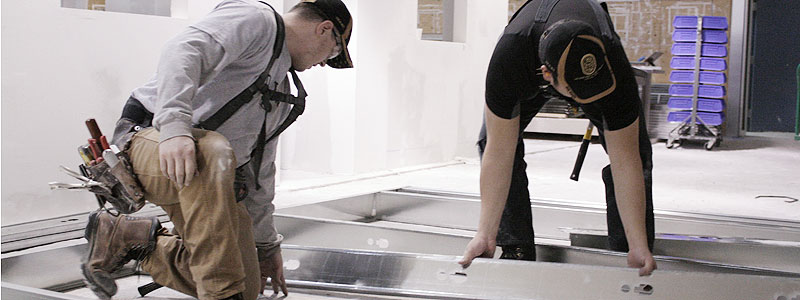
Good question, I think. Wait, what is a lather? Even more confusing, what is an interior systems mechanic (ISM)?
If you visit the Industry Training Authority website, it lists lather/interior systems mechanic but then references the Wall and Ceiling Program!
I’ve even walked up to interior systems mechanics and asked them what they call their trade. I’ve had plenty of funny looks when asking, but they don’t give me the answer I’m looking for.
Maybe it’s a small trade, and there just aren’t many people doing it? WRONG—there are several thousand of them in B.C. alone!
Maybe there aren’t that many of them on a job at one time? WRONG—they are often the largest crew on commercial sites!
Maybe it’s a dying trade and their work is becoming obsolete? WRONG—more and more gets added to the trade as more products and tools are introduced.
What do people on construction sites call these tradespeople? They call them drywallers, which is a very vague term for what they actually do. Drywall installation is just one small portion of the trade. I was called a drywaller several times in my career even though I rarely installed it.
Is it normal for trades to have slang names for people working in other trades? Yes. For example, an electrician is often referred to as a “sparky” and a sheet metal worker as a “tin basher.”
But the difference between our trade and others is that neither the general public nor the construction sector understands the scope of what we do.
Some people even confuse us with drywall finishers, who are actually tapers and a completely different trade.
The general public assumes that carpenters build all the walls and ceilings and that the drywaller comes in just to put the Gyproc or sheetrock on.
In fact, on institutional, commercial, and industrial projects, carpenters usually build only the formwork and general structural work for pouring concrete.
Once the slab is poured on commercial jobs, they’re done and the lathers/ISMs take over the framing duties, along with envelope construction, access floors, acoustical components like T-bar ceilings, insulation, fire proofing, and much more.
Carpenters still do the framing on most home construction projects up to three storeys high and some small apartment projects when they are selected as wood frame.
We sign up around 100 apprentices each year, but we are looking for new trades people to replace the Boomers who are set to retire. The carpentry trade draws many people interested in construction, but with a greater awareness that the kind of work they want to do is done by lathers/ISMs, we will grow our numbers.
—Stewart Baird is the Interior Systems Mechanic Instructor/Coordinator for the Finishing Trades Institute of B.C. This piece was original published in the Summer issue of TradeTalk.

Recent Comments